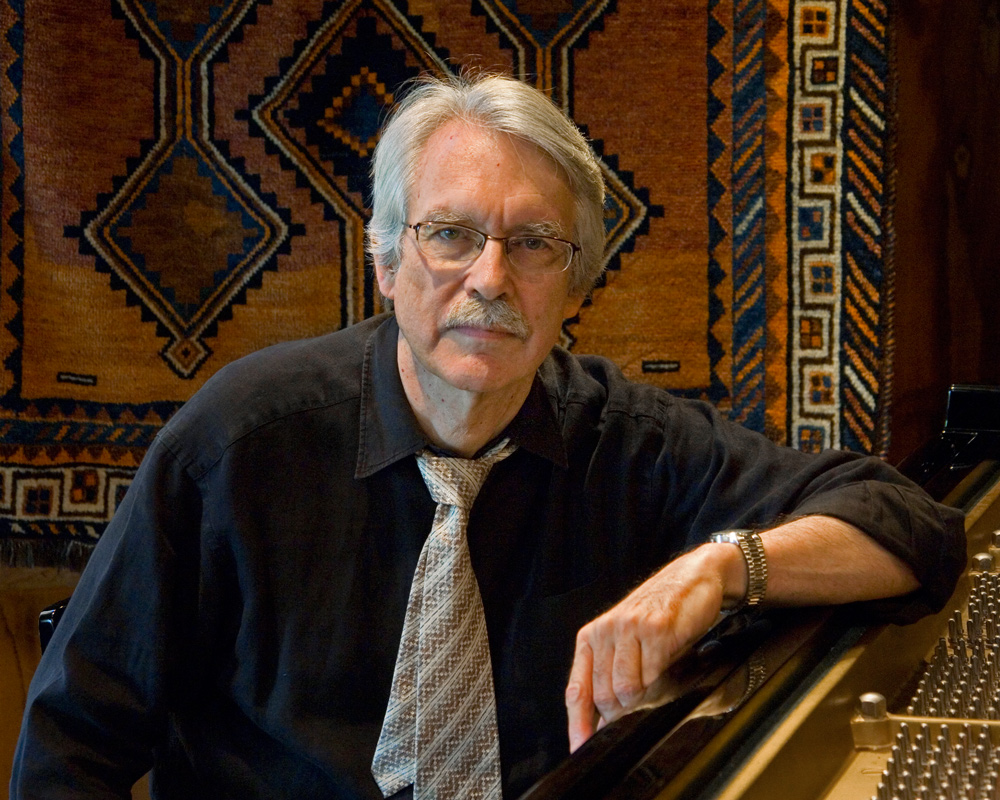The program for this year’s MIT Symphony Orchestra concert can be traced back to the day that John Harbison first encountered the music of Joseph Haydn.
“I was a string player as a kid. I played violin, but I wanted to be a violist,” recalls the composer, McArthur “genius” and MIT professor. “I was always waiting to switch. And the summer I switched was the greatest summer of my life to that point, because the idea my teacher had was, we will meet every morning for two months and we will play Haydn quartets.”
And that’s exactly what they did. Harbison struggled to read the sheet music–viola is notated in a different clef than violin–but the newly-minted violist was undeterred. He had fallen love, not just with the viola, but with Haydn’s playful panache.
That, says Harbison, is the beauty of Haydn. “[He] plays with form expectations which seem like they are going to be quite literally fulfilled–and then they are suddenly quirked. This is essentially Haydn thinking. And if you go through a lot of his pieces in any medium, you begin to be ready, wary of his restlessness, [knowing] that something will happen that you really haven’t heard him do before.”
Harbison hopes to pass on his appreciation for the great Austrian composer to members of the MIT Symphony Orchestra (MITSO), who will perform Haydn’s “Symphony No. 100 in G major” in concert on Friday, March 17 at Kresge Auditorium in Cambridge as part of the MIT Sounding Series. The program also includes one of Harbison’s own compositions and Shostakovich’s “Symphony No. 5.”
Harbison, 78, had planned to conduct the Haydn, but trouble with his eyesight prompted a recusal. (He expects to be able to conduct again after completing treatment for cataracts.) “John will be there in support, and it’s kind of an homage to his career,” says MITSO conductor Adam Boyles, who will conduct all three of the evening’s pieces.
Boyles hopes to impart an appreciation of Haydn’s mischievous sensibility. “He’s endlessly funny,” Boyles says. “There’s just an optimism and a generosity of spirit that pervades his music.”
And yet, Harbison points out, “it’s impossible to get a good fix on him.” Case in point: the “Symphony No. 100 in G major,” known colloquially as the Military Symphony, is one of Haydn’s weightiest compositions. “The military in those days was serious business,” Harbison says. “Huge numbers of people who were sent into battle got killed. Offense was way ahead of defense. So the sound of a military band or the sound of a corps drilling was not toy soldier world.” The symphony’s most affecting moment comes at the end of the second movement, when a hush falls over the orchestra and a lone trumpet calls out. It’s a surprisingly simple passage, Harbison says, “the kind of thing only a second rate player who only has military function would play.”
Part of Harbison’s mission is to return Haydn to the mainstream. He blames the rise of historically informed performance–in which musicians play on period instruments and scores are interpreted with academic fastidiousness–for stranding Haydn in a kind of limbo. “You won’t reclaim Haydn until he is simply courageously restored to those repertoires where he lived for so long,” Harbison says. “And the reason he’s not courageously restored is that conductors are gun shy because they think they will be criticized for not having historical knowledge.”
But Boyles sees the winds shifting in Haydn’s direction. “I think it’s OK again for everybody, and the styles have informed each other,” he says. He believes the main reason people shy away from Haydn’s music is simply that it’s difficult. “There is nowhere to hide in that music,” Boyles says. “It’s very transparent in that regard.”
And, just as Haydn will give the MITSO performers a musical workout, so too will Harbison’s piece. He composed “Double Concerto for Oboe and Clarinet” in 1985 with a student orchestra in mind. The concerto hinges on a furious ballet between the two soloists–in this rendition, MIT alums Eran Egozy on clarinet and Paul Ragaller on oboe–while the orchestra surges and retreats with frenzied alacrity.
The composition’s fiery temperament is the result of a feverish effort by Harbison. “I had just got out of the hospital, I had a case of the flu. I had a fever of 103,” he says. “I thought, to keep going through it, I need to write a pretty energetic piece.”
“Double Concerto for Oboe and Clarinet” is a study in theatrics, by turns stealthy and discordant. But Boyles cautions against reading Harbison’s intensity as heavy.
“I just wish everyone who approached [Harbison’s] music could just meet and talk with him for about half an hour. I think they would know the music immediately,” Boyles says. “His work is filled with–just like Haydn–it’s filled with a kind of wit and humor and musical savvy that is the man.”
MIT Symphony Orchestra
Adam Boyles, conductor
Friday, March 17, 2017 / 8:00 pm
Kresge Auditorium, W16, 48 Massachusetts Avenue, Cambridge, MA
Free in advance for the MIT community, $5 general admission
Reserve a seat
(Tickets will also be available at the door)

